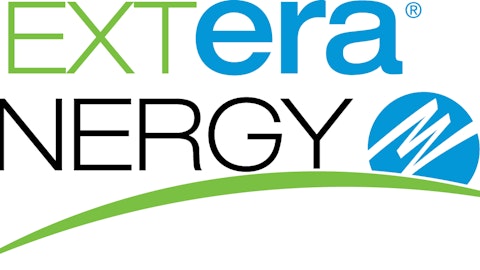A question of fairness
The PTC for renewable-energy generation creates an artificial incentive for owners of wind farms. Why shut down turbines during the grid’s off-peak hours when it’s the best time to maximize production and therefore subsidy revenue? For instance, wholesale electricity prices for off-peak hours sank to negative-$0.0411 per kWh in October 2012. A recent report (link opens PDF) from the Northbridge Group, an electricity consultancy firm, showed that the problem is becoming more profound every year:

Source: The Northbridge Group.
Although natural gas has done its part to lower electricity prices, gas-fired generators usually come online in full-force during peak hours and as needed. Taking that into account, there does seem to be a correlation between wind capacity and negative prices. Is it fair for the government to subsidize renewable-energy generation at the expense of more established providers?
Competitive disadvantage
The splurge on wind turbines is certainly good news for renewable-energy advocates, customers, and the nation’s energy future. Carbon-fiber manufacturer Zoltek Companies, Inc. (NASDAQ:ZOLT) reported a record 2012 thanks to the mad dash. The company states that its carbon-fiber wind turbine blades can capture three times the energy of their fiberglass predecessors. All good news for renewable energy. There couldn’t possibly be any negative long-term effects. Right?
Well, if negative prices persist for longer periods of time, it could force generators to make some potentially toxic long-term moves to protect margins. Exelon Corporation (NYSE:EXC) could be in particularly rough shape in the near term with much of its 19,000 MW of nuclear capacity serving the Chicago metropolitan area — prime wind territory. I recently argued that nuclear energy shouldn’t be considered more expensive on new construction costs alone, but there’s a different problem at play here.
The company’s CEO, Christopher Crane, recently told Bloomberg that if the subsidy continues, “there is a very high probability that existing safe reliable nuclear plants will no longer be competitive and will have to be retired early.” That could be a potential problem for prices in the long run. Why? Nuclear power plants operate for months at a time without interruption, thus stabilizing the grid and prices. Consider this comparison in utilization rates:
| Generation Source | 2012 Capacity | % of 2012 Electricity Supply |
|---|---|---|
| Wind | 51,620 MW* | 3.4% |
| Nuclear | 101,409 MW | 19% |
Source: EIA.
*Excludes 8,380 MW installed in 4Q12, which didn’t contribute to grid.
Whereas it took wind energy 15,200 MW to generate 1% of the nation’s electricity, nuclear needed only 5,337 MW to create the same share. Lower utilization rates alone don’t make wind energy obsolete. After all, it’s tough to beat free fuel inputs. It does, however, highlight the importance of more consistent generation sources. In other words, should nuclear capacity be taken offline because of pricing concerns, it would be unlikely for wind power to fill the void — not exactly how the market is supposed to work. Natural gas plants could fill the gap, but that isn’t necessarily good news for consumers. More volatile fossil fuel plants can lead to higher costs.
Foolish bottom line
It appears that American wind farms really could blow away nuclear energy’s share of electricity production, although it will need big help from renewable-energy subsidies. While that may be considered a catalyst for companies such as NextEra Energy, Inc. (NYSE:NEE), consider what would happen if the PTC were slashed or taken away. It’s the only reason wind farms send power to the grid when demand is low.
Therefore, I see the PTC being adjusted at some point in the near future to more accurately reflect the market. Any funds not handed to wind farm operators should be invested into grid-sized battery farms that could store cheap renewable energy generated in off-peak hours and send it to homes when demand is highest. Utilization rates of wind energy could then match those of nuclear energy, effectively tripling the nation’s share of wind generation without adding a single kilowatt of capacity.
The article Can America Blow Away Nuclear Power? originally appeared on Fool.com.
Fool contributor Maxx Chatsko has no position in any stocks mentioned. Check out his personal portfolio, his CAPS page, or follow him on Twitter, @BlacknGoldFool, to keep up with his writing on energy, bioprocessing, and emerging technologies.The Motley Fool recommends Dominion Resources and Exelon.
Copyright © 1995 – 2013 The Motley Fool, LLC. All rights reserved. The Motley Fool has a disclosure policy.

